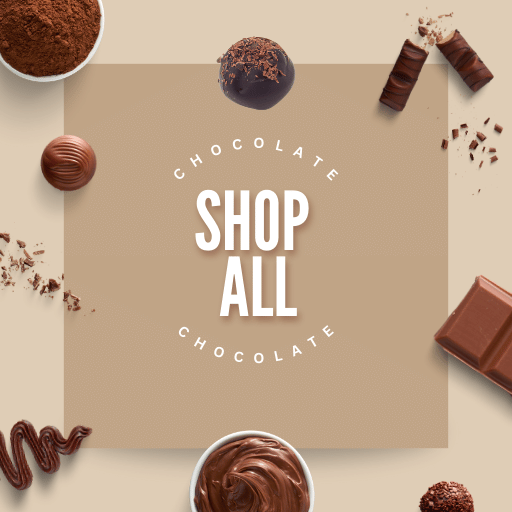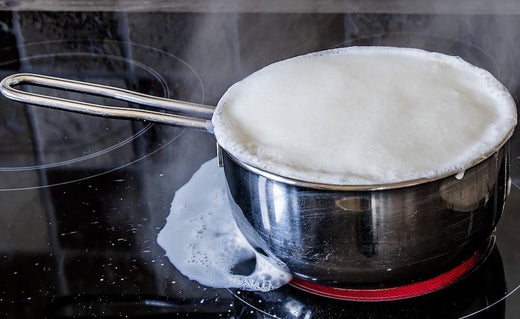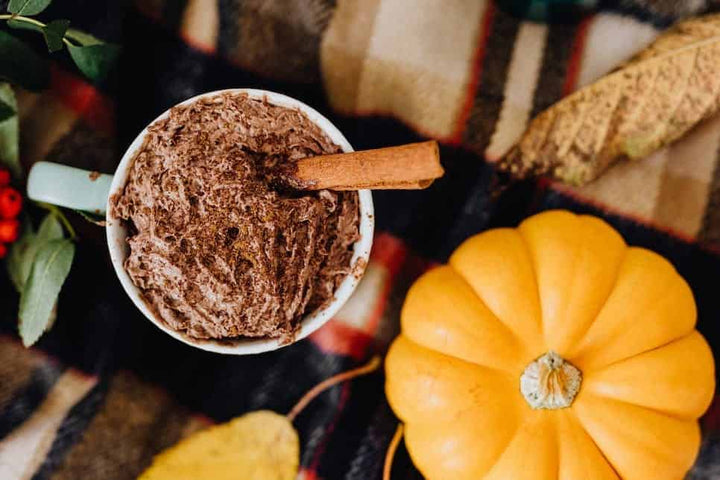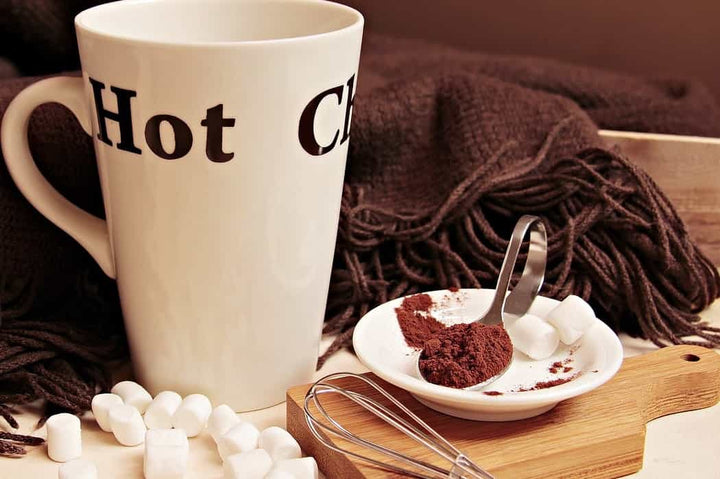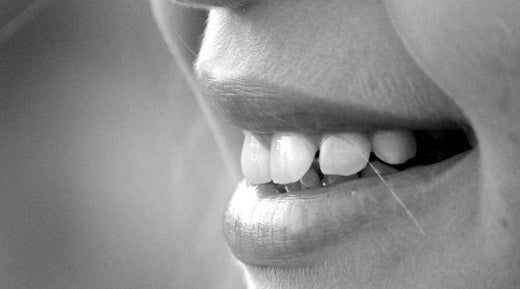On a cold British evening, few pleasures are as comforting as a mug of hot chocolate.
The heart of this beloved beverage is the chocolate itself, but equally vital is the milk and how it's heated.
The process of warming milk might seem straightforward, but there's an art to it.
If you heat it too little, the flavours won't meld properly; too much, and you risk a burnt taste and an unappetising skin forming on top.
Mastering the milk is key when aiming for the perfect cup of cocoa.
So, before you pop that kettle on or turn the stove to a blaze, join us in exploring the best ways to heat milk for a truly divine hot chocolate experience.
Related: Who Invented Hot Chocolate?
How to Warm Milk For Hot Chocolate On the Stove
Warming milk on the stove is a classic method and, when done correctly, can yield a perfectly smooth and delicious base for your hot chocolate. Here's how you can achieve that:
-
Choose the Right Saucepan: Opt for a heavy-bottomed saucepan. This ensures even heating, reducing the risk of the milk scalding or forming a skin.
-
Pour the Milk: Measure the milk you need for your hot chocolate and pour it into the saucepan.
-
Low to Medium Heat: Start with a low heat setting. This allows the milk to warm gradually and evenly. You can increase to a medium heat, but always be watchful.
-
Stir Constantly: Keep stirring the milk with a wooden spoon or silicone spatula. This prevents skin from forming on the surface and ensures that the milk doesn't stick to the bottom or sides of the pan.
-
Monitor the Temperature: If you have a kitchen thermometer, the ideal temperature for heated milk is around 65-70°C. However, if you don't have a thermometer, you can gauge readiness by steam rising from the milk. At this point, it will be hot but not boiling.
-
Remove from Heat: Once the milk has reached the desired temperature, remove it from the heat. It's essential not to let the milk come to a boil, as this can change its flavour profile and make it taste burnt.
-
Mix with Hot Chocolate: Now, you can either add your chocolate directly to the saucepan or pour the warmed milk over it in a mug, mixing well until smooth and thoroughly combined.
Recipe: Perfect Vegan Hot Chocolate Recipe
Top Tips:
- Add a dash of vanilla extract or a sprinkle of cinnamon to the milk as it warms for an even richer flavour.
- Always use fresh milk. Older milk can sometimes curdle when heated, ruining the texture of your hot chocolate.
There you have it - a simple and effective method to warm milk for hot chocolate on the stove.
Perfect for those cosy nights in, with a blanket and your favourite film.
Related Post: Chocolate Fondue Dipping Ideas
How to Warm Milk For Hot Chocolate in the Microwave
In our fast-paced world, sometimes we need a quick and easy way to enjoy a comforting mug of hot chocolate.
The microwave offers a convenient shortcut, but there's still a knack for getting that milk perfectly warmed without causing a messy overflow or unwanted skin on top.
Here's a step-by-step guide to warming milk for hot chocolate in the microwave:
-
Choose a Suitable Mug or Jug: Pick a microwave-safe container large enough to hold your milk with plenty of space at the top. This will prevent any potential spills as the milk heats and expands.
-
Pour the Milk: Fill your chosen container with the milk you want for your hot chocolate, but remember not to fill it to the brim.
-
Microwave on Medium Power: Instead of blasting the milk on high, set your microwave to a medium power setting. This will warm the milk evenly without suddenly boiling it over.
-
Time It Right: Start with 1 minute for a standard mug of milk. After this time, stir the milk quickly and check the temperature by dipping a finger in (be cautious). If it needs more warmth, microwave it in 20-second intervals, stirring it and checking it afterwards.
-
Stir Between Intervals: After each microwave session, stir the milk to ensure even heating and to prevent skin from forming on the top.
-
Mix with Hot Chocolate: Once the milk is at the desired temperature, add your chocolate directly into the mug or mix in another container. Stir thoroughly until smooth.
Top Tips:
- Be careful when removing the container from the microwave; it might be hotter than the milk.
- To enhance your hot chocolate, add some vanilla essence or a sprinkle of cocoa powder to the milk before microwaving.

What is the Perfect Temperature for Milk for Hot Chocolate?
The ideal temperature for milk in hot chocolate is around 65-70°C.
Why this specific range, you ask?
-
Flavour Preservation: Heating milk to this temperature ensures that its natural sweetness is emphasised without starting to cook it, which can result in a burnt or altered taste.
-
Avoid Scalding: Milk heated beyond this range can start to scald. Scalded milk can form a skin on the surface and develop a flavour that might overshadow the taste of your chocolate.
-
Safety: At 65-70°C, the milk is hot enough to provide a warming sensation when sipped but not so hot that it risks burning your mouth. Safety first!
-
Perfect Melting Point: This temperature range is ideal for melting good-quality chocolate into the milk, ensuring a smooth, well-blended beverage.
If you're using a kitchen thermometer, it's easy to check the milk's temperature.
But if you don't have one, you can gauge readiness by steam starting to rise from the milk.
The milk will be hot but not boiling, which is right for that perfect cuppa cocoa.
So, while personal preferences play a role, aiming for the 65-70°C mark ensures a hot chocolate rich in flavour, safe to sip, and utterly comforting.
Related Post: Is Hot Chocolate Good For a Sore Throat?

How to Make Homemade Hot Chocolate?
There's nothing quite like a cup of homemade hot chocolate, especially on a chilly British evening.
It's a treat that warms the soul and sweetens the mood.
Ditch the instant powders and dive into a world of velvety richness with this easy-to-follow recipe.
Ingredients:
- 500ml whole milk
- 100g good quality dark chocolate (at least 70% cocoa content)
- 1-2 tbsp caster sugar (adjust to taste)
- A pinch of sea salt
- Optional: 1/2 tsp vanilla extract for added depth of flavour
Method:
-
Prepare Your Chocolate: Roughly chop the dark chocolate into small pieces so it will melt more easily into the milk.
-
Heat the Milk: In a saucepan, warm the milk over a medium heat. Be sure not to boil it. If you're using a thermometer, aim for 65-70°C.
-
Add the Chocolate: Once the milk is warm, start adding the chopped chocolate a bit at a time, stirring continuously to ensure it melts smoothly into the milk.
-
Sweeten the Deal: Once the chocolate is entirely melted, add the caster sugar, a pinch of sea salt, and the vanilla extract if using. Stir until the sugar dissolves completely.
-
Serve and Savour: Pour your homemade hot chocolate into mugs and enjoy immediately. For an extra touch of luxury, top with whipped cream, marshmallows, or a sprinkle of cocoa powder.
Top Tips:
- For an even richer hot chocolate, use a mix of dark and milk chocolate or add a splash of double cream towards the end.
- You can infuse the milk with additional flavours, like a cinnamon stick or orange zest, by letting them steep in the warming milk for a few minutes before adding the chocolate. Enjoy!
There you have it - a homemade hot chocolate recipe that offers a luxurious, velvety drink.
Perfect for those moments when only the real deal will do.
What Can You Add to Hot Chocolate to Make It More Delicious?
Every hot chocolate enthusiast knows that while the classic cocoa is divine on its own, there's always room to add a little extra indulgence.
Whether you're looking for a twist on the traditional or aiming to elevate your mug of chocolaty warmth to gourmet levels, here are some delightful additions to consider:
- Spices:
-
-
Cinnamon: Add a stick whilst heating the milk, or sprinkle some ground cinnamon on top.
-
Nutmeg: Grate a touch of fresh nutmeg on top for a warm, spicy aroma.
-
Chilli: A pinch of chilli powder or a small piece of chilli pepper can bring a spicy kick, enhancing the cocoa's richness.
-
- Liqueurs & Spirits:
-
-
Bailey's: This creamy Irish liqueur adds sweetness and a hint of whiskey.
-
Rum: A dash of dark rum can provide a warming, boozy kick.
-
Amaretto: This almond-flavoured liqueur complements chocolate wonderfully.
-
- Flavourings:
-
-
Vanilla: A splash of good quality vanilla extract can enhance the overall flavour.
-
Peppermint or Mint: Add a drop of mint extract for a refreshing twist.
-
Orange Zest: Grate a little into your drink for a chocolate-orange delight.
-
- Creamy Additions:
-
-
Whipped Cream: A dollop on top makes for a luxurious treat.
-
Salted Caramel Sauce: Drizzle over the top or stir it in.
-
Nut Butter: Swirl in some almond, peanut, or hazelnut butter for a nutty richness.
-
- Extras:
-
-
Marshmallows: A classic topping that melts into gooey sweetness.
-
Chopped Nuts: Sprinkle on top or stir in for added texture.
-
Chocolate Shavings: Use a grater to add shavings from a block of your favourite chocolate.
-
Coffee: Make it a mocha by adding a shot of espresso.
-
-
Alternative Milks: If you're looking for a dairy-free option or just want to experiment with flavours, try almond milk, coconut milk, or oat milk.
Remember, while these additions can make your hot chocolate even more delicious, the quality of the chocolate and milk you start with will also play a crucial role in the final taste.
Where Can You Buy Chocolate to Make Homemade Hot Chocolate?
Creating the perfect indulgent hot chocolate begins with sourcing the finest quality chocolate, and there’s no better place than the trusted Whitakers Chocolates.
Founded in 1889, our family-run Yorkshire-based company has been delighting Brits with our superior chocolate offerings for generations.
Our product, Easymelt, is a game-changer for hot chocolate enthusiasts.
Easymelt is a high cocoa percentage dark chocolate couverture specifically crafted for ease of melting.
Its rich, robust flavour profile and smooth consistency provide an excellent base for making luxurious hot chocolate at home.
The high percentage of cocoa solids ensures an intense, authentic chocolate taste, making it a perfect choice for hot chocolate lovers seeking an indulgent experience.
Remember, the key to a perfect hot chocolate is starting with the best quality chocolate, and using Easymelt takes you one step closer to creating a rich, creamy, and thoroughly indulgent beverage.
Simply melt it in a small amount of warm milk until smooth, then whisk in the rest of your milk.
The result?
A perfectly smooth, flavoursome hot chocolate right in the comfort of your own home.
So why not elevate your hot chocolate experience with Easymelt and turn your cosy winter nights into an indulgent chocolatey delight?
Some Notes From an Expert Chocolatier
As an experienced chocolatier, I’ve spent many years perfecting the art of chocolate making and learning to appreciate the nuances of flavour and texture that make the difference between good and extraordinary chocolate.
When it comes to treats like hot chocolate, my philosophy is simple – if you’re going to indulge, make sure it’s worth every calorie!
Creating a truly memorable hot chocolate is an art in itself.
The base should be top-quality real chocolate, like the Easymelt from Whitakers Chocolates.
Its high cocoa percentage and ease of melting make it an excellent choice for creating a rich, luxurious base for your hot chocolate.
Final Notes On How to Heat Milk For Hot Chocolate
Perfecting the art of making hot chocolate isn't just about the ingredients you use but also the technique applied in warming the milk.
A well-heated milk ensures that the chocolate melts seamlessly, delivering a smooth, velvety texture and unlocking the full depth of the cocoa's flavour.
Whether you prefer the traditional stovetop method or the quick convenience of a microwave, avoiding overheating the milk is essential.
Boiling can alter the milk's taste and risk a burnt bottom or overflow, which nobody wants to clean up!
Aiming for that sweet spot between 65-70°C will guarantee the ideal warmth without compromising the milk's natural sweetness.
Also, investing in a simple kitchen thermometer can be a game-changer, ensuring consistent results every time.
